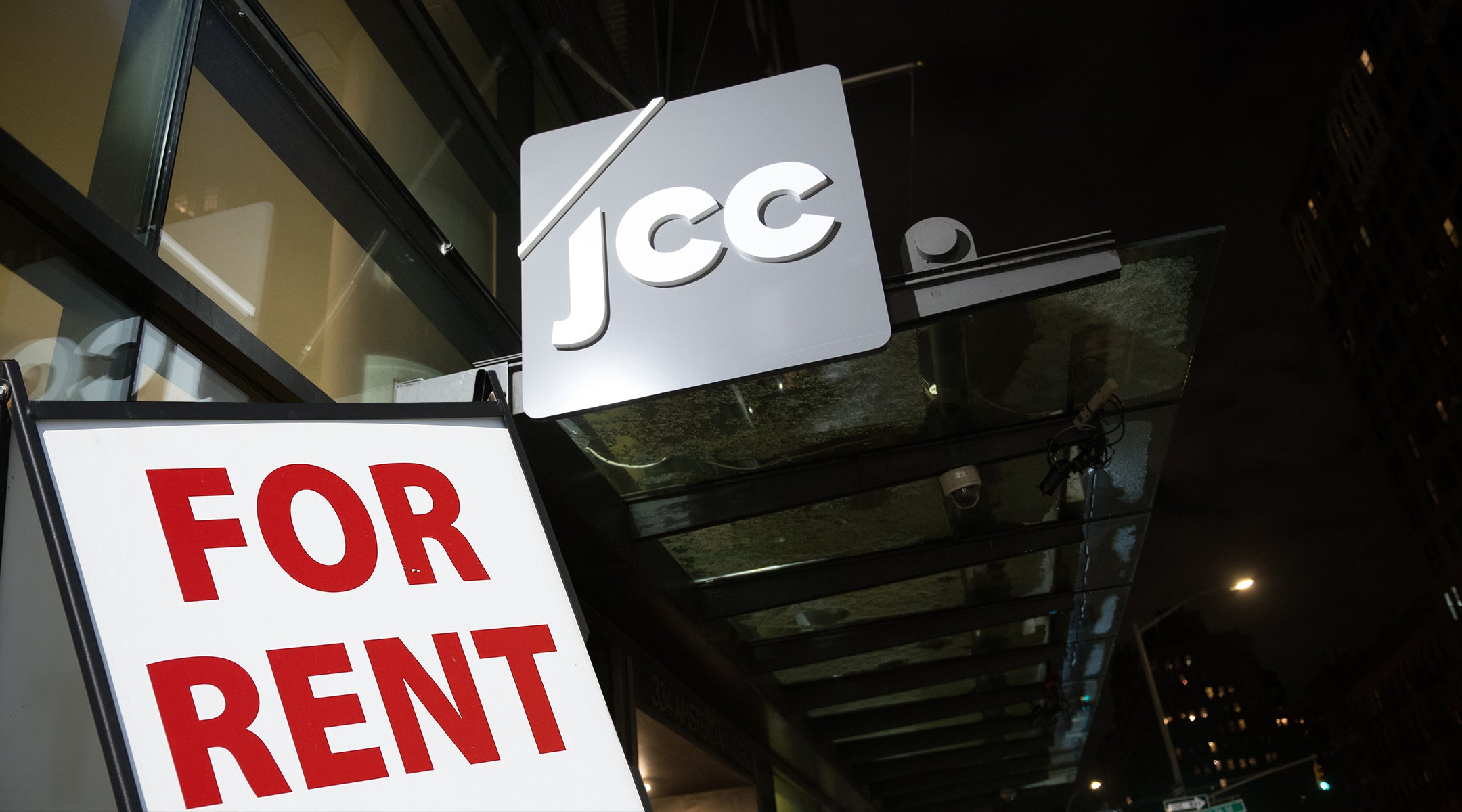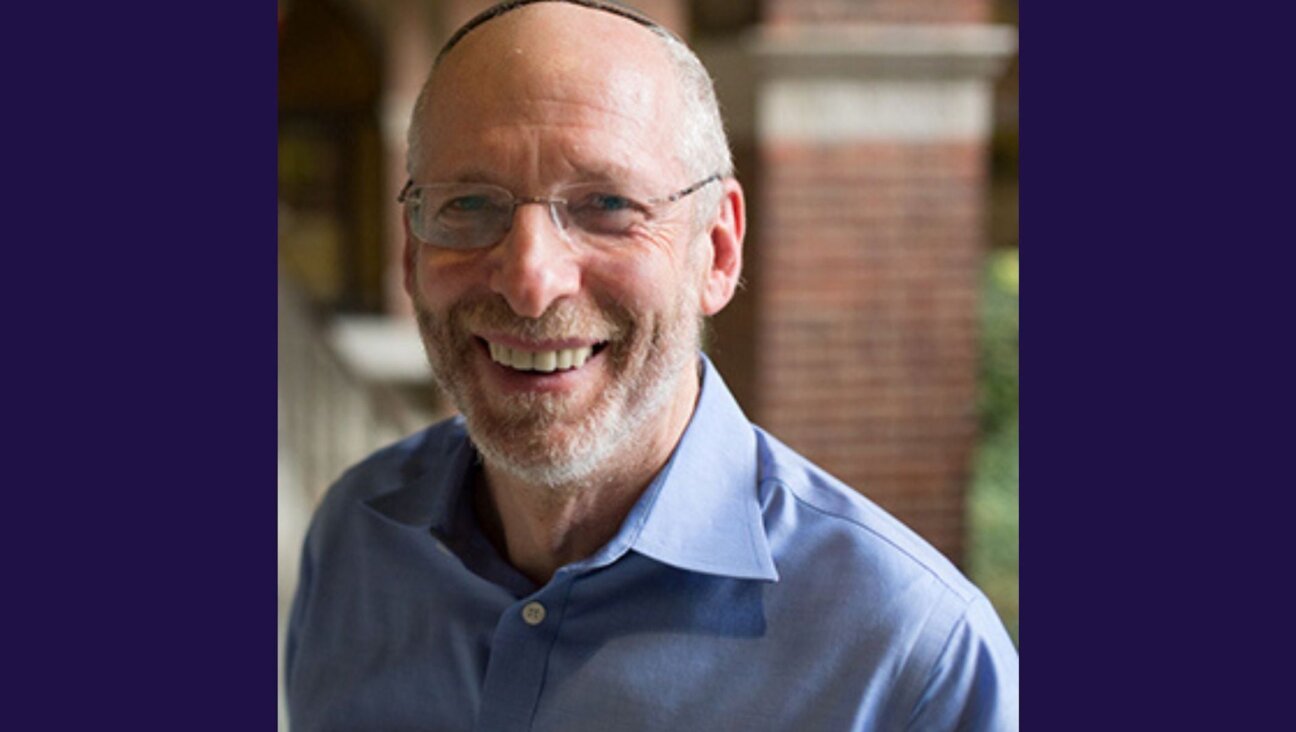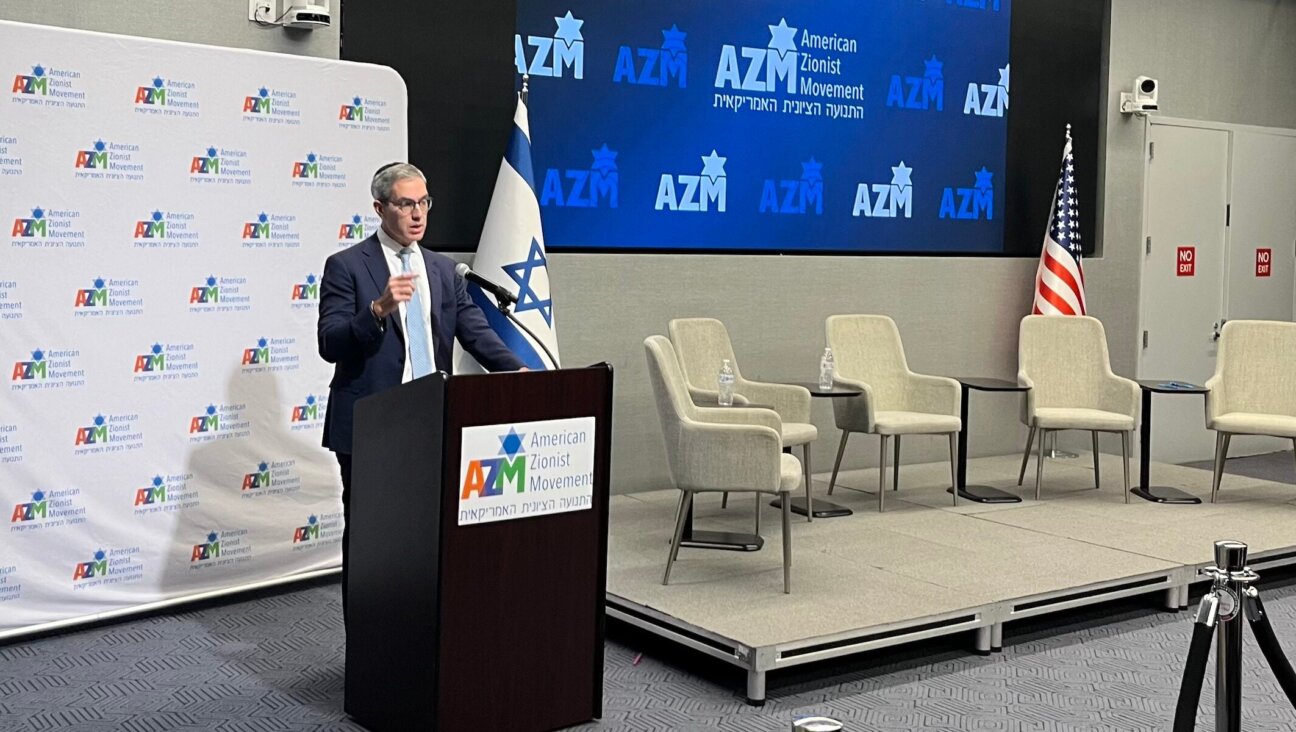Many smaller NYC congregations rent their space. As real estate prices soar, how do they find a home?
‘You can’t go on StreetEasy and find a synagogue space exactly as you want it,’ said Rabbi Adam Mintz, whose congregation recently moved into the Manhattan JCC

Photo by Noam Galai/Getty Images and Taylor White/Toronto Star via Getty Images
(JTA) — When Rabbi Adam Mintz’s Modern Orthodox congregation was first looking for a space on the Upper West Side, finding one that worked was no simple task.
Kehilat Rayim Ahuvim, the fledgling congregation, didn’t have the resources — i.e. tens of millions of dollars — to buy a property and develop their own building, so the plan was to rent.
But renting space for a congregation comes with very specific needs.
They needed a room that could fit the entire congregation, which would typically draw 50 to 80 people for services. There had to be a second space for kiddush lunch after Saturday mornings. The building needed to be on the Upper West Side, where its congregants, who’d broken off from Lincoln Square Synagogue following a lay leadership dispute, lived and could walk to synagogue. Perhaps most importantly, the space needed to be available for them on Friday nights and Saturdays, plus the major Jewish holidays.
And all this in the Manhattan real estate market.
Finally, after a months-long search, Mintz, on the advice of a congregant, found a spot that checked all those boxes, housed inside the National Council of Jewish Women’s building on West 72nd Street.
“God was smiling at us one day,” Mintz said in an interview.
“You can’t go on StreetEasy and find a synagogue space exactly as you want it,” Mintz said. “And that space on 72nd Street, I guess we walked past it every day. But it took somebody — one of our members had this amazing idea.”
Mintz said the arrangement was a win-win. For Mintz, his congregation had a place to meet while paying below market rate. Meanwhile, the NCJW was now benefiting from a new stream of income while housing a Jewish group, a partnership which Mintz said “strengthened the Jewish community.”
That search was just one example of the effort — and creativity — required to secure a space to congregate in New York City and solve the “edifice complex,” as Mintz refers to it.
“As real estate prices have gone sky high, New York City — and especially Manhattan — congregations have had to get creative,” said David Kaufman, author of “Shul with a Pool.”
Kaufman has written extensively on the history of American synagogues, including the entry for synagogues in Kenneth Jackson’s “Encyclopedia of New York City.” In that entry, Kaufman segmented the history of the city’s synagogues into four phases — the latest of which, starting around 2000, details the challenge of finding space as rents have skyrocketed.
“In my early years, the ‘70s and ‘80s, New York was not like that,” Kaufman said. “Rent was not astronomical and you could find premises for various purposes. Nowadays it’s nearly impossible.”
Congregations have indeed gotten creative, leasing from a variety of properties that moonlight as synagogues. A “shul community” called Kehillat Harlem rents out a storefront property on Harlem’s Adam Clayton Powell Boulevard. Modern Orthodox synagogue Prospect Heights Shul is housed in Luria Academy, a Jewish school in Brooklyn.
But even after a congregation secures a space, it is not necessarily out of the woods.
Independent minyan Darkhei Noam had been renting from Manhattan Country School on the Upper West Side since 2017. Its lease at MCS was set to expire in 2034 — but when the school went bankrupt this summer, the congregation was left scrambling for a new home.
Similarly, the Fort Tryon Jewish Center has been renting from the Fort Washington Collegiate Church in Upper Manhattan, but the church’s closure is forcing them out at the end of December, according to an email sent to their mailing list.
Paul Wachtel, the former co-chair of Darkhei Noam’s board who was involved in their building search, said it was “very difficult to find a place.” The cost of renting property can be prohibitive for a congregation that only uses the space a few times per week, he said.
“We need a space for all the Jewish occasions and events, but it would be impossible to buy and difficult to rent unless we have a partner who would make use of it at other times during the week, like an educational institution,” Wachtel said in an interview during the search. That search recently concluded — for now — when Darkhei Noam came to a one-year lease agreement with the Trevor Day School.
Mintz said he believes the optimal model is to rent space from a large Jewish organization’s building. He stuck to that model earlier in September when his congregation moved, after 21 years at NCJW, into the Marlene Meyerson JCC Manhattan, rebranding as the Shtiebel @ JCC.
Mintz said he was excited by the move, for starters, because the congregation would be moving into “probably the busiest Jewish building in Manhattan.” (Mintz had long wanted to move into the JCC; things were finally set in motion after KRA held a service there last year, which served as something of a trial run, while its own air conditioning was broken.)
About a month into the relocation, Mintz said the Shtiebel @ JCC has been successful, with new people “from the community and people connected through JCC” joining services every week. His congregation is also planning to use the JCC’s rooftop sukkah.
But Mintz said this model — renting space from a Jewish organization — goes beyond just the JCC, and that he’d like to see it “replicated everywhere.” He added that big synagogues often rent out their spaces to non-Jewish organizations between services, and could do so with smaller Jewish nonprofits in mind.
“Whether it’s synagogues looking to find space in Jewish buildings, or big synagogues looking to rent [out] space to Jewish things — and nothing wrong with the non-Jewish things — but I think within the community, it only strengthens the community,” he said.
Kaufman said he hadn’t seen much precedent for the concept of a congregation leasing space from a Jewish community hub.
There are examples, Kaufman said, of congregations that were formed within organizations, such as at the Educational Alliance (originally called the Hebrew Institute) and the former Young Women’s Hebrew Association building on 110th Street.
“But in none of these cases is it another congregation that moves into and takes over space in one of those buildings,” Kaufman said. “So that is new to me.”
UJA-Federation of New York, the city’s largest Jewish organization, “regularly gives space to community organizations — including synagogues — for a wide variety of events and activities in our building,” public relations director Emily Kutner said by email. But she said that until now, “We have not been approached by a congregation to hold services in our building.”
Other Jewish organizations have been approached, and have rented out their space.
Temple Emanu-El’s downtown campus moved last year into the Center for Jewish History’s building. Executive director Dina Mann said the search involved looking at “dozens” of commercial spaces and reaching out to other “mission-aligned” nonprofits and museums that “could have had spaces.”
“I think having a similar sensibility about how to approach different aspects of Jewish community and life in New York is helpful. Specifically around security,” she said.
Another perk of being in the building, Mann added, is that “our religious school kids get exposed to different aspects of Jewish history.”
Rabbi Jonathan Leener, who leads Prospect Heights Shul, said the synagogue’s partnership with Luria Academy has opened up new opportunities in jointly applying for grants.
“It made sense to be like, ‘Wow, we could split this,’ and working really together to take advantage of what’s out there,” Leener said. “We’re hoping that some of the larger foundations and philanthropists are attracted by this model of Jewish community, of working together.”
As congregations like the Fort Tryon Jewish Center continue searching for a home, Mintz said he’d love to see a fund that incentivizes Jewish partnerships by kicking money to both the hosting and renting organizations. Some congregations face more obstacles with this model than others; FTJC, for example, serves the community of Washington Heights, which lacks Jewish organizations that could house tenants.
Still, for congregations that are walking distance from those organizations, Mintz said he believes these partnerships could be fruitful for all.
“It’s such an important real estate model, and we don’t utilize our real estate properly,” Mintz said.













